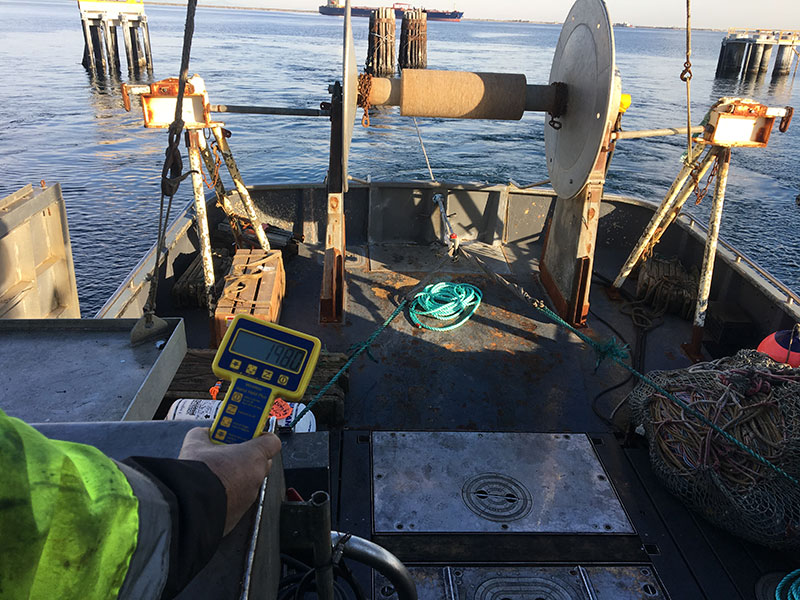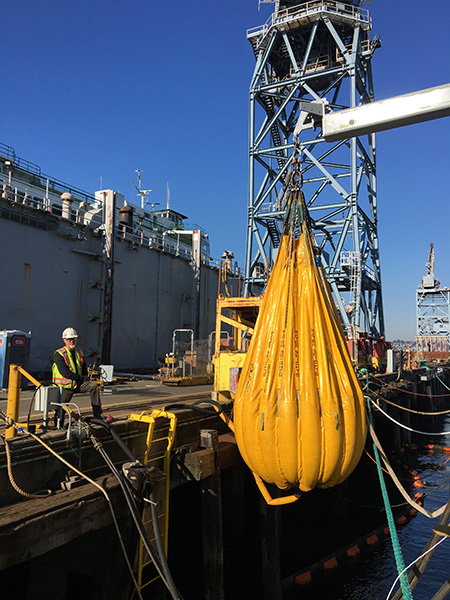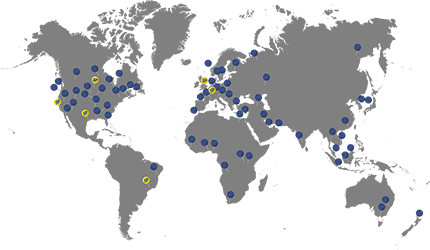
Seattle, Washington-based Arxcis Inc., a crane inspection and operator safety training company, uses a 25-ton capacity wireless shackle load cell (or loadshackle) from Straightpoint (SP) to keep personnel at a safe distance during load testing.
Arxcis is accredited to carry out such tests on a variety of on and offshore equipment, including floating cranes and derricks; vessels; material handling products; and loose rigging gear, including wire rope and other below-the-hook equipment. Its customers are principally concerned with meeting the requirements of the Occupational Safety and Health Administration (OSHA).
 Jeff Williams, co-owner, president and chief inspector at Arxcis, said: “We also have certifications to inspect cranes and other equipment used in longshoring; shipyards and ship breaking; and the construction industry. We use the SP loadshackle mainly in the load testing portion of our operations, whether doing a static test or weighing the test weights themselves.”
Jeff Williams, co-owner, president and chief inspector at Arxcis, said: “We also have certifications to inspect cranes and other equipment used in longshoring; shipyards and ship breaking; and the construction industry. We use the SP loadshackle mainly in the load testing portion of our operations, whether doing a static test or weighing the test weights themselves.”
Williams, who has been inspecting cranes and below-the-hook equipment for 22 years, explained that the wireless capability of the load shackle—data is transmitted wirelessly utilising the latest in IEEE 802.15.4 (2.4 GHz) technology—is essential to keeping personnel safe.
“When load testing some marine cranes we will load the crane to 125% of the rated load for that radius and, if there’s a catastrophic event, one doesn’t want to be in close proximity of the hook,” he said.
A number of recent case studies represented typical Arxcis applications. In a bollard pull test at Platypus Marine, of Port Angeles, W.A., for example, the loadshackle was attached to the vessel by two straps and then a long line was sent out from the stern and attached to a fixed point. The vessel then ramped up to full power and the poundage was read and recorded every 30 seconds for 15 minutes.
In another application for the University of Washington, aboard the Thomas G. Thompson research vessel, the loadshackle was attached to the top of a movable A-frame gantry; a water bag was then filled to the predetermined weight. “In this case,” he said, “the bag was filled to 14,000 lbs. and then the frame was cycled through its full range. After the dynamic test the frame was then filled to 20,000 lbs.”
Aboard the same vessel, the loadshackle was integral to safe completion of a static load test of a hydro boom that extended out from the starboard (right) side of the boat to lower scientific equipment into the water.
If required, SP’s wireless data logging software allows for simultaneous control, display and real time data logging of up to 100 SP telemetry load cells. Logged data is captured in a .csv file format and opens in MS Excel providing easy visual presentation, analysis of logged data, and simple test certificate generation.
Williams concluded: “The SP equipment has been flawless; the durability, accuracy and transmission range of the load cell is stellar.”



